by Danny Weil
In a newly released book entitled The Gates Foundation and the Future of US Public Schools, author Kenneth Saltman argues that the entry into educational reform policies within the last decade by the Bill and Melinda Gates Foundation and other, what he calls “venture philanthropists”, is part of a broader ideological and economic trend. More specifically, Saltman argues that this development is one connected to neo-liberalism and the shift from a capitalist industrial economy to a service oriented economy.
Saltman continues by correctly identifying that this modification represents a shift from the public governance of education to that of the private governance of education subsidized by financial policies that squarely place the costs on the public [1]. But it is not so much the shift to a service economy but rather capitalism’s long trek from direct worker exploitation under industrialism that has morphed into placing working people in naked indebtedness and it is certainly part of the transformation of late-industrial capitalist production from a system of direct extraction of surplus value (profit) to profit extracted by ‘rent’; this is profit extraction by the accumulation of the surplus value that is socially produced.
From the captain’s seat of finance where the one percent sit with their hearts seemingly altruistic and their hands filled with largess, the exploitation of labor remains unseen, attired in monetary clothing that hides the particular nature of modern, financial capitalist exploitation. Production and surplus value extraction currently increasingly relies on pooled, socialized labor — that is, on workers who come together globally to combine their labor collectively on a large, almost unseen scale; hardly noticed even by the workers themselves. This is very different than surplus value extraction based on one-on-one individual, capitalist exploitation. The rentier class is not on the factory floor, but remains globally aloof, alienated from the harsh realities of uber exploitation, yet profiting handsomely from the production of rent and the enlargement of debt.
Saltman goes on to maintain that “venture philanthropy” differs greatly from the philanthropy of the past, such as organizations like the Ford Foundation, The Carnegie Corporation and the Rockefeller Foundation, all of which were implicated in ‘philanthropic giving’ throughout the 1900’s. He also attributes this to the shift in capitalist production.
However, Saltman additionally contends that prior philanthropic efforts of, let us say, Carnegie or Rockefeller were driven by a sense of moral obligation. This author disagrees. So-called philanthropic efforts by the captains of industry, seen most glaringly in the 1900’s and especially following the Gilded Age of capitalism, were hardly moral obligations in the sense of benefiting people; they represented instead conservative ideological efforts to harness support for industrial capitalism in general and thus served as both ideological gatekeepers and as grist for the mill in developing a cadre of capitalist administrators and managers who would oversee the collection of surplus value, or profits in an age of industrial capitalist development.
To be fair, Saltman does acknowledge the role of philanthropy historically when he points to the fact that philanthropy has always had the consequence of financial benefits for elites and the diffusion of class antagonisms for working people [2]. I certainly agree, and while this article will eventually speak of the former, it is the latter that is of particular interest here.
Philanthropic giving has always had as its intent the hegemony of elite class interests and
assuring what Walter Lippmann labeled “the manufacture of consent”, specifically by casting the central characters in the ‘giving scheme’ in the light of beneficence while in reality legitimizing a system that is truly malfeasant in both character, morality, intent and ideology. All of this contributes to the development of false consciousness among working people and the general public who begin to align their interests with those of the capitalist class.
Whether it is John D. Rockefeller shown in newsreels handing out dimes to the indigent during the Great Depression of 1929 or the building of schools by Henry Ford and other philanthropists, the true nature of their so-called philanthropic intent was to assure that an exploited working class would never become class conscious and would remain dependent on the capitalist class. Thus it is this cultural and psychological factor of crass manipulation that lies hidden behind the shadows of what appears to be a charitable purpose.
Saltman is also accurate in granting that Carnegie, though he spoke of charitable giving, had to gain the means of giving his wealth, through the vast and violent exploitation of workers [3]. This is true for all the so-called philanthropists, both past and present; for in order to accumulate their wealth, the exploitation of workers is necessary at every stage of capitalist expansion. Profits, or wealth, are the result of the garnishing of surplus value from exploited workers and this remains the hidden sleight-of-hand behind the philanthropists’ fantastic wealth and charitable largess. It can be analogized to a thief stealing your wallet with one hundred dollars and then giving you back ten cents in the name of charity.
And so we see that the charitable giving of the philanthropist is not just a financial means or trick to avoid taxation, though it certainly is, but is an ideological deception that is designed to hide the nature of antagonistic class relations and the role of the state in enabling and allowing for the monopolization and plunder by the ruling class. Of course this is never stated nor hinted at by a supplicant corporate media that seeks to cast the philanthropists as true patriots of charitable, upright and moral character.
It is the immorality of the surplus value accumulation process coerced by worker exploitation that drives the philanthropist, never mind his or her personal agenda. In fact, fear of and loathing for the masses is the real reason behind philanthropic giving and nowhere can this be seen more clearly than in the current educational “advocacy philanthropy” that we see today and had for quite some decades.
Finally, this author also finds himself in disagreement with Saltman in his notion that educational “venture” philanthropic trends have their seeds in the last decade, starting in the year 2000 [4]. In fact, neo-liberal “advocacy philanthropy” (which I use to describe the “venture philanthropy” that Saltman identifies) began much earlier; it commenced shortly after the ‘Reagan revolution’ and is a direct result of a strategy for what can be called the leveraged buy-out of public education through neo-liberal policies.
Advocacy Philanthropy
For purposes of this article it is important that I define terminology and thus I begin with the definition of “advocacy philanthropy”.
The term “advocacy philanthropy” can be found most notably in the work of Cassie Hall and Scott L. Thomas in their 2012 work, Advocacy philanthropy and the public policy Agenda: The Role of Modern Foundations in American Higher Education (a paper prepared for the 93rd annual meeting of the American Educational Research Association) [5]. The term is particularly appropriate for it captures correctly the intent of the current, modern day philanthropists who, though they would like to be seen as charitable givers, are little more than manipulators of both the cultural, political and economic landscape for self-interests and class interests.
Hall and Thomas correctly note that in the earlier years of capitalist philanthropy in education, foundations such as Carnegie and Rockefeller, to name a few, concentrated their philanthropic efforts on infrastructure for universities, capital building projects as well as academic research. In the 20th century, philanthropists were partial to donating their ill-gotten swag for such things as Historically Black Colleges and Universities (HBCU), biological research projects, the advancement of social sciences, pensions and new, emerging technologies [6].
Foundation initiatives certainly can be said to have aided in the development of higher educational initiatives during this time, and they were duly praised and well-received by a public that had never seen the massive growth of such industrial capitalism laced to such endeavors before. However, philanthropy of the kind described by Hall and Thomas has changed significantly within the last two decades. Currently, philanthropy operates in an “advocacy role”, emphasizing broad scale sweeping changes in public policy through political and financial manipulation. These changes coincide with the rise of neo-liberalism, finance capital, deregulation and the fixation and devotion to supposed ‘free markets’. Philanthropy is now concerned with deep policy changes in both economics and politics and it works to ensure that institutional and social control shifts, that the public commons be diminished or even vanquished and that power remains in the hands of elites.
Thus, as Hall and Thomas note, this is an “advocacy philanthropy” for it not only seeks to assure and advocate for ideological domination and colonization of public thinking in the interest of the capitalist class, but it is now geared towards guaranteeing material domination and control through ruthless public policy creation. Advocacy philanthropy can really now be likened the new American Legislative Exchange Council (ALEC) for it is money ‘given’ for investment in assuring and continuing the domination of neo-liberal ideology and reality [7]. It is not “enlightened self interest” but “heightened self interest”.
Though prevalent in all areas of life, advocacy philanthropy now works to secure the privatization of education, the destruction of public governance of educational decision making, the creation of school-to-work factories and testing centers, and the domination and wholesale monopolization of the $650 billion dollar industry that is now education. From primary school to colleges and universities, such groups as the Lumina Foundation, The Bill and Melinda Gates Foundation and a congregation of other such philanthropic parasites work assiduously to take apart the public commons using coin-activated politicians, huckster lawyers, a top heavy administration, and a well placed financial, governing class.
What this means and has meant for students, teachers, society, education and learning is the devastation of subjectivity, critical thinking, shared governance in policy, the destruction of teachers’ unions, corruption of the political process, the wholesale closing of public schools, revamped college curriculum focused on school-to-work, massive student debt, for-profit colleges, increased tuition, denied access to classes, isolated cyber learning, the end of liberal arts and humanities and the virtual garroting of the public commons.
The advent of the Great Financial Crisis of 2008 has now bled the public commons of financial support and this has given the advocacy philanthropists an even greater foothold over public policy. “Grants” now replace “public finance” for such things as the corporatization of schools. “CEO’s” now substitute for “college presidents” and the new “private-public partnerships” in crime are the advocacy philanthropists poised to turn the entire public educational commons over to Wall Street.
Advocacy philanthropy is a pernicious and ruthless philanthropy, one really never historically seen before and it is active, hands-on and scurrilous as the public coffers are raided and left bare. It is, in fact, part of the “shock doctrine” that Naomi Klein has written eloquently about and in its virulent form [8], it is colonizing educational policy to the detriment of both the individual, society and indeed, the world. Cloaked in the garments of charitable giving, the new advocacy philanthropy is really a disguise for taking control, once and for all, of the public commons by Wall Street, venture capitalists and the burgeoning elite. Channeling public monies into the privatization of education is the neo-liberal undertaking and it has worked quite well.
In this essay I hope to give some history of advocacy philanthropy and show its connections to the work of dismantling public institutions of education and betraying the public trust. I also hope at the end of the piece to shed light on the true “philanthropists” – the working class which gives more and more each and every day, that is, if they have work. This is the same working class that pays taxes, creates profits for the wealthy, subsidizes the rich through taxation and thus they are truly the real charitable givers, though they may not be aware of this. If working people were to become aware that they were the source of all wealth and develop class consciousness, then the so-called charitable givers would be denuded and tremble in fear.
This, of course explains, to a great extent, why philanthropy is not only the great fear-based robbery of the public commons, but also the larcenous instrument of class consciousness.
Some history of advocacy philanthropy
The idea of channeling public money into private schools through the use of philanthropic funding was first inspired by J. Patrick Rooney. As a member of the State Policy Network, an affiliation of state-based conservative think tanks that provides arguments and model legislation to citizens seeking to change the law in favor of the privatization of education (think ALEC), Rooney served on the boards of many conservative think tanks, including the National Center for Policy Analysis in Texas and CEO America [9]. Rooney was also the chairman of the American Education Reform Foundation, which advocated early on for private voucher proposals to be used for public schools.
Rooney began his work for private vouchers in 1991 (the date of the first statewide adoption of charter schools), when he sought to convince the Indiana State Legislature to channel public money to private schools [10]. At the time, he was also the largest financial donor to Newt Gingrich and a leading financial backer of the Gingrich GOPAC and the Progress Freedom Foundation. His associates at the time included such reactionary luminaries as Phyllis Schaffley of the Eagle Forum, a right wing think tank, Steve Forbes, former presidential candidate and CEO of Forbes Magazine; and Pete Wilson, the former mayor of Los Angeles and then talk show host on KGO radio out of San Francisco.
Priming the pump: The leverage buy-out of public schools through charter schools
It was Rooney that was the originator of the idea that private scholarship money (philanthropy) could be used to leverage public funds — a stratagem adopted by CEO America, The Children’s Scholarship Fund (CSF) and a host of other like-minded reactionary organizations. The design was to leverage public funds through private financing and this basically meant that if more private money was made available to students in the form of partial private tuition grants (philanthropy), then students would be more willing and able to opt out of existing public schools, taking with them public funds made available through private voucher programs.
And here lies the trick of advocacy philanthropy: ‘priming the pump’ with private ‘charitable giving’ eventually means that public funds will be assigned to the strongboxes of the wealthy – a direct transfer of wealth. Rooney knew this, as do his contemporaries.
Wikipedia defines a leveraged buy-out as:
A leveraged buyout (LBO) is an acquisition (usually of a company but, can also be single assets such as a real estate property) where the purchase price is financed through a combination of equity and debt and in which the cash flows or assets of the target are used to secure and repay the debt [11].
In the private sector, leveraged buy-outs occur when investors purchase the stock of a corporation and retire most of it — basically plundering the corporate entity. The corporations in question then have less equity than they did before the purchase. The investors subsequently replace the retired stock with bonds (debt) creating more liability for the corporation through a direct transfer of wealth.
In the case of a leveraged buy-out of public schools, this takes place when equity (in this case private philanthropic or venture capital) is combined with public financing to raid the public coffers and secure a steady stream of tax subsidized profits. The private equity (philanthropic funds) is used to prime the pump for the ultimate capture of public funds. The public funds are then transferred to the private sector, leaving less equity and cash flow to public schools, thus replacing publicly funded schools with privatized debt.
The charter school scam and the leveraged buy-out
To give an example of how all of this works, we can easily visualize the trick in play when it comes to charter schools. Private philanthropic funding sources leverage a variety of federal monies to supplement low state and local “per pupil equivalents.”
In the year 2009, in addition to Title I funding the US Department of Education awarded more than $50 million of grants through two programs administered by the Orwellian Office of Innovation and Improvement: the Credit Enhancement for Charter School Facilities Program and the State Charter School Facilities Incentive Grants Program. In addition there were at the time four other federal programs administered by federal agencies that charter schools could access for their facilities’ needs: the Public Assistance Grant Program (administered by FEMA), the New Markets Tax Credit Program and the Qualified Zone Academy Bond Program (both administered by the US Treasury), along with the Community Programs (administered by the Department of Agriculture). These neo-liberal government programs all ensured that public funds would be utilized for privatization efforts [12].
Charter schools are big business and the advocacy philanthropists knew it then and they know it now. Large charter school chains like Green Dot, KIPP, Alliance Schools and YES Prep Public Schools quickly squeeze out their community-based competitors in the race for profits. Moreover, owing to generous support from the US Department of Education,the non-governmental financing sector for charter schools has also grown leaps and bounds. As early as 2009, 25 private, non-profit organizations collectively provided over $600 million in direct financial support to charter schools. They, of course, were injected with advocacy philanthropy monies in order to do so. In addition, stock rating agencies Standard & Poor’s and Moody’s listed at the time, over 70 rated charter school bonds (debt) totaling over $1 billion issued in various states [13].
As I wrote in 2009:
Unquestionably, the huge increase in charters has included a massive growth in private and philanthropic start-up monies to support them, as well as the growth of a burgeoning educational industry to distribute the grants and sell ‘educational products and services’ while receiving tax dollars for their efforts. Yet for those wondering about ‘neo-liberalism’ and what it means in this context the answer is clear: none of this could have been done without the deregulation, favorable legal legislation and government intervention in the market. What we are seeing is the transfer of public funds into the private troughs of the handwringing elite who clothe their true agendas in the name of “children”. Unfortunately, this is true all over the nation now, and is being fueled by Arne Duncan and the billions of stimulus monies he uses to extort cities and states. All of this is now wrapped up in the noble lie and pious fraud of providing charter school innovation as a competitive model that can raise the standards and levels of education. Is it true? Of course not, that is all sophistic rubbish and the alchemists that coin it know it, as do those of us who oppose it (ibid.).
What must be added for purposes of this article is that none of this could have been accomplished without advocacy philanthropy and the LBO, the seeds of which harvested the whole neo-liberal wrecking ball scheme.
With advocacy philanthropy flowing from billionaire coffers like rivers into the sea, Don Gaetz, a Florida Republican freshman senator at the time and former Okaloosa school superintendent was apt to comment: “Charter schools were a movement, but now charter schools are an industry. They have lobbyists — they walk around in thousand-dollar suits, some of them” [14].
Leveraging public funds through private advocacy philanthropy
So now back to Rooney’s original idea of leveraging public funds. It has now been accelerated and expanded due to the Great Financial Crisis that occurred in 2008 to include everything from student scholarships to charter schools. It is the strategy now favored by the ‘shock doctrinaires’ who understand that with dwindling tax revenues in an age of neo-liberalism and financial collapse, public monies once available for public schools have virtually dried up and have been replaced with public debt. Leveraging public monies through private financing is now the game plan of ‘advocacy philanthropists’ as cash-strapped schools are either forced to die on the vine of the public commons due to lack of funding or beg on bended knees at the feet of the ‘advocacy philanthropists’.
James Leininger: God’s sugar daddy
Although Rooney was the originator of this approach to denuding the public commons through the leverage buy-out of, in this case, public schools, the program really got off the ground in 1989, when James Leininger, a wealthy Texas physician, teamed up with Rooney to re-engineer the Texas educational landscape. During the 1990’s when the privatization of education began its direct attack on public schools, Leininger spent $5.6 million of his own money on ‘philanthropic’ donations to politically organized “non-profit” organizations, both in Texas and across the US. The San Antonio Current, a Texas newspaper, labeled him at the time “God’s sugar Daddy” [15].
Leininger also established the Texas Policy Foundation, modeled after the conservative Heritage Foundation, another right wing think tank that publishes sundry views on right wing politics while advocating reactionary policies. With the help of a $2 million bequest from the Walton Foundation and CEO America, the national private scholarship organization was created in 1995. During this time, former Wal-Mart employee Fritz Steiger, whom Leininger had hired to run the Texas Public Policy Foundation, transferred to CEO America where he served as the group’s president. Leininger also convinced the Walton Foundation to give him $100,000 for the A+ PAC for Parental School Choice, another reactionary, pro-voucher advocacy group [16].
However Leininger’s influence did not stop with private school vouchers. He also helped during this time to elect three of the six religious-right-supported members of the Texas State Board of Education. A busy bee indeed, Leininger also secured loans of $1.1 million and $950,000 for two pro-voucher candidates. One candidate was Rick Perry who was then running for Lieutenant-Governor and who is now Governor of Texas; the other was Carol Rylander who was then running for State Comptroller [17].
In many ways it was Leininger who put Rooney’s ideas into practice and through the Walton’s generous ‘philanthropic’ monies, kicked off the privatization of education in Texas. Although many people are unaware, the Texas privatization program served as the neo-liberal poster boy and model of the privatization of education throughout the nation.
CEO America and the birth of the private national scholarship philanthropy movement
CEO America was the first national organization to leverage public monies for educational privatization efforts by directly awarding private vouchers to low-income students. The organization began with a fanfare fueled by favorable media coverage. It created a public policy network, or syndicate, composed of a mixture of wealthy individuals devoted to the privatization of the public commons and education in general, conservative pundits who worked feverishly and faithfully in the vein of the “Powell Memo” [18], and corporate executives and political representatives from the religious right.
The alliance between conservative forces and faith-based followers created the necessary alchemy to further the agenda of the political right and the privatization of education through ‘leveraging’. The purpose of the network was and still is to build public support for educational privatization by demonstrating the efficacy of private vouchers and to work to soften legislative and public resistance to the idea of using public monies to fund private schools. It has now morphed into nationwide consortium devoted to privatizing schools, from Common Core standards, testing, charter schools, student learning outcomes for community colleges, to the wholesale corporatization and commercialization of education.
According to CEO America’s original mission statement, the organization would work to expand privately funded voucher programs throughout the nation [19]. And by developing private scholarship funds seeded by advocacy philanthropy, and entrepreneurial venture (vulture) capital, CEO America hoped to do more than simply provide legitimacy to private vouchers paid for with public funds. Not unlike its counterpart, The Children’s Scholarship Fund (CSF), CEO America’s unstated mission was to open an enormous new educational venture capital market with the potential of producing sizeable returns for entrepreneurial capital investors – all in the name of charitable giving.
The way CEO America initially worked was to utilize a two-pronged strategy: First, it would design and endorse educational public policy changes through legislation. This was one of the first prototype and forays for what now is known as ALEC (The American Legislative Exchange Council). To this end, it helped finance citizen initiatives to legalize and legitimate public funding for private school education through organizations such as the State Policy Network, active at the time in 35 states. Among the State Policy Network associate members at the time were the Heritage Foundation, Grover Norquist’s Americans for Tax Reform, J. Patrick Rooney’s Golden rule Insurance Company, and of course CEO America [20].
The impact of these advocacy philanthropy groups, their affiliates and their activities cannot be underestimated. They have now produced a climate of unprecedented privatization of the educational landscape and there is little doubt that their ideas have been thoroughly seeded and in many cases privately and generously harvested.
CEO America was very politically astute and prescient during the 1990’s and it identified areas of concern that it felt were necessary to be addressed immediately for its mission of leveraging private monies for the wholesale privatization of education through the capture of public funds.
Foremost, CEO America reached out to disenfranchised parents and students, especially students of color in inner city urban areas who were underserved by failing educational institutions. This movement to capture the hearts and minds of urban parents who faced massive defunding of public schools continues today and can be best seen through such deviant devices such as Parent Revolution that seeks to disembowel many public schools through the same game plan [21].
The organization leaders and their public policy advocates at the time, as many organizations and advocacy groups since, assiduously labor to give these constituencies the ideological impression as well as the material hope that private education is not only possible, but also the best of all educational designs and structures for their children — basically arguing that private schools or charter schools mean higher school achievement for disenfranchised students and thus assure equitable entry into what is now labeled “The New Global Economy”.
Promoting the idea as an ‘educational reform’ package to the disenfranchised and marginalized populations of Americans, such as low-income citizens and now starving school districts, was high on CEO America’s agenda then as it is now, and thus remains the backbone of the ideological movement to privatize and commercialize all aspects of education.
In an attempt to convince the public of the importance of private school choice and the superiority of privatized education in general, CEO America sought to create successful model voucher programs to galvanize public support for private school choice. Through a series of carefully orchestrated efforts, CEO America literally waged a virulent public relations campaign to convince an unsuspecting public to embrace the role of the “free market” in providing educational opportunity, with the government of course, footing the bill [22].
The Children’s Scholarship Fund (CSF) and advocacy philanthropy
When two wealthy benefactors, Ted Forstmann and multibillionaire John Walton (Walton Family), aided by technology venture capitalist John Doerr, decided in 1997 to offer partial scholarships, through advocacy philanthropy to 1,000 low-income families in Washington, D.C., they were inundated with nearly 8,000 applications. Impressed by the heady response, they teamed up to found the Children’s Scholarship Fund on June 9, 1998.
The new organization’s leaders, which included Forstmann, Walton, then Senate Majority Leader Trent Lott, former House speaker Newt Gingrich, former Education Secretary William Bennett (now the CEO of K12, Inc.) – described the CSF as a means for creating educational opportunities for poor people and of course, giving parents what they called a private choice in educational selection, rather than continuing to ‘force parents to send their children to failing government schools’. However, their intent was far from helping poor and disenfranchised students and instead reflected their allegiance to the politics of conservative economist, Milton Friedman and his slavish devotion to the ‘marketplace’ and profit accumulation.
According to its website at the time, CSF claimed to work with “investors, entrepreneurs, educators and public policy experts to rethink the way education is funded, organized and delivered”. It would do this, the organization stated, by touting the merits of market oriented education that reflects what proponents considered to be the American Dream: freedom, opportunity and the entrepreneurial spirit [23].
The stated goal of CSF at the time, as is the stated goal of myriad such organizations today, was to bring together leaders from business, religion, and right wing minded educational experts to explore how our supposed ‘free enterprise system’ can improve education. Forstmann and Walton, both ideological matchstick men, approached their task with a religious zeal. But they were more than simply ideological harbingers of right wing politics, they were savvy political organizers with an astute understanding of the economic and ideological trench work that needed to be done to thoroughly convince the public of the virtues of privatization and then get them to actually become protagonists in the dismemberment of the public commons.
In most cases, the interests of these new “educators” really lay in the bed of profits and power as much as education. Sure, they were ideological champions of the idea of privatization for privatization’s sake, but their true identity was hidden beneath the undergarments of ever increasing profits and venture capitalism to which they so lavishly devoted themselves. Doerr, for example, invested heavily in for-profit ventures through New Schools Venture Fund and was a campaign advisor to Vice President Al Gore in his 2000 bid for presidency. Walton, on the other hand like his Walton Foundation, was active in conservative politics and venture-vulture funds. Forstmann was very clear when it came to their motives: “Some people in this effort are actually going to make money. They are, like everybody else who does a good job” [24].
A $100 million ‘philanthropic’ contribution from Wal-Mart heir John Walton gave CSF its initial start. To acquire the capital necessary to offer the private scholarships so essential to leverage public funds, Forstmann and Walton used their own monies under the auspices of ‘advocacy philanthropy’ but they also solicited some of the largest entrepreneurial and philanthropic donors in the US who were also interested in capturing one of the last vestiges of the public commons – the ‘educational industry’. And while CSF attempted, along with its counterparts, to present a beneficent image of philanthropy and non-partisanship – arguing that what works for children is best for America – they were little more than reactionary ideologues. Together, Forstmann and Walton were also the major financial backers of the Washington Scholarship Fund, a private voucher program in Washington, D.C.
[Note: Part 2 of this piece is at: Link]
End notes:
2. Ibid.
3. Ibid.
4. Ibid.
5. “Advocacy philanthropy and the public policy Agenda: The Role of Modern Foundations in American Higher Education” (a paper prepared for the 93rd annual meeting of the American Educational Research Association).
6. Ibid.
7. http://www.alecexposed.org/wiki/ALEC_Exposed
8. http://www.naomiklein.org/shock-doctrine
9. “Conservative Spotlight: J. Patrick Rooney.” Human Events (31 March 1995). Volume 16. Washington D.C.
10. Ibid.
11. http://en.wikipedia.org/wiki/Leveraged_buyout
13. Ibid.
14. http://www.sptimes.com/2007/04/01/Opinion/Charter_schools_run_w.shtml
15. FECInfo Data Base. Search for contributions from James Leininger. http://www.tray.com.
16. Dubose, L. (27 March 1998). “Deschooling Society”. The Texas Observer.
17. Bryce. R. (1 February 1999). “Million Dollar Man.” P.4. Austin Chronicle.
19. CEO America’s Mission Statement. (5 June 1998). http://www.ceoamerica.org
20. People for the American Way. (20 April 1999). “Privatization of Public Education: a Joint Venture of Charity and Power.” p. 9. http://wwwpfaw.org.
21. http://parentrevolution.org/
22. CEO America’s History. (5 June 1998). http://www.ceoamerica.org
23. http://www.scholarshipfund.org.
24. Forstmann, T. (19 November 1999). “Ted Forstmann calls for a competitive system that rewards educators for excellence and penalizes failure.” The Children Scholarship Fund. Washington, D.C.
[Thank you Danny for this much needed contribution]
The writer is an educator and an author. He writes for Dailycensored.com.
[Note: This post may not be reproduced without permission from the author.]

This work is licensed under a Creative Commons Attribution-NonCommercial-NoDerivs 3.0 Unported License.
If publishing or re-posting this article kindly use the entire piece, credit the writer and this website: Philosophers for Change. Thanks for your support.





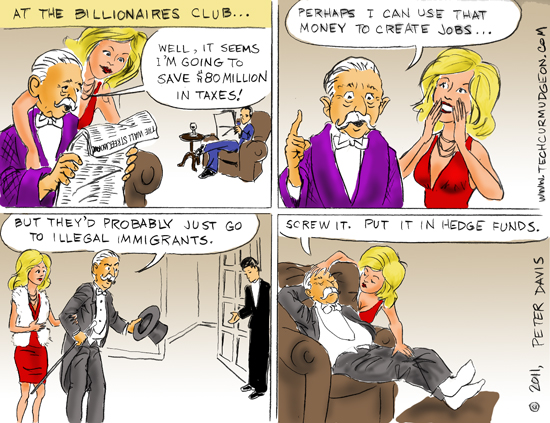

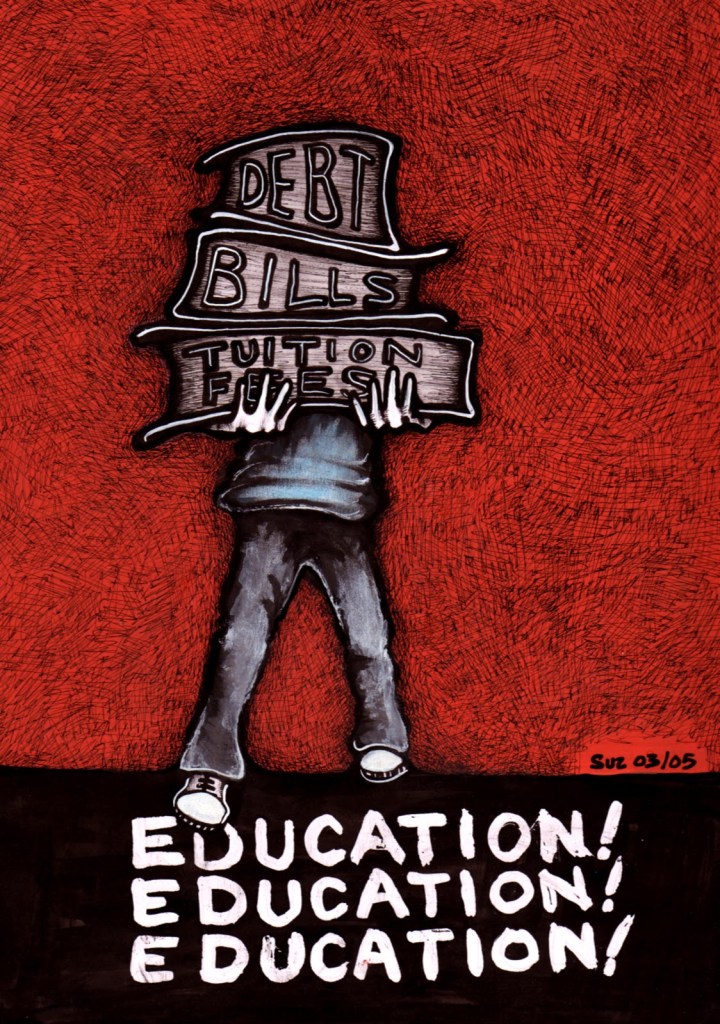
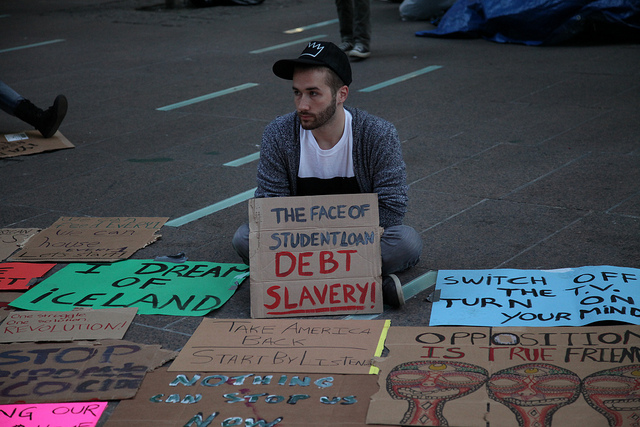




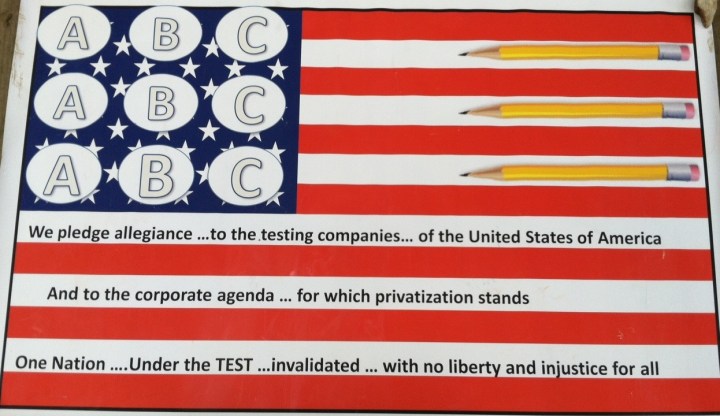

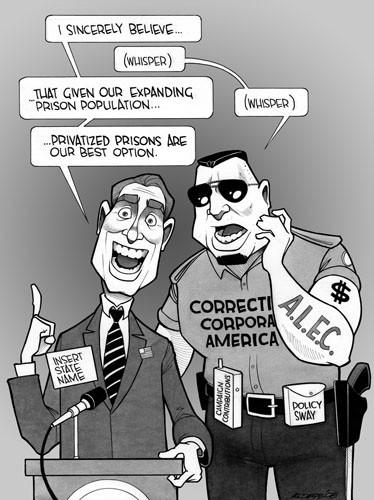






2 thoughts on “Advocacy philanthropy and the leveraged buy-out of public schools — Part 1”
Comments are closed.